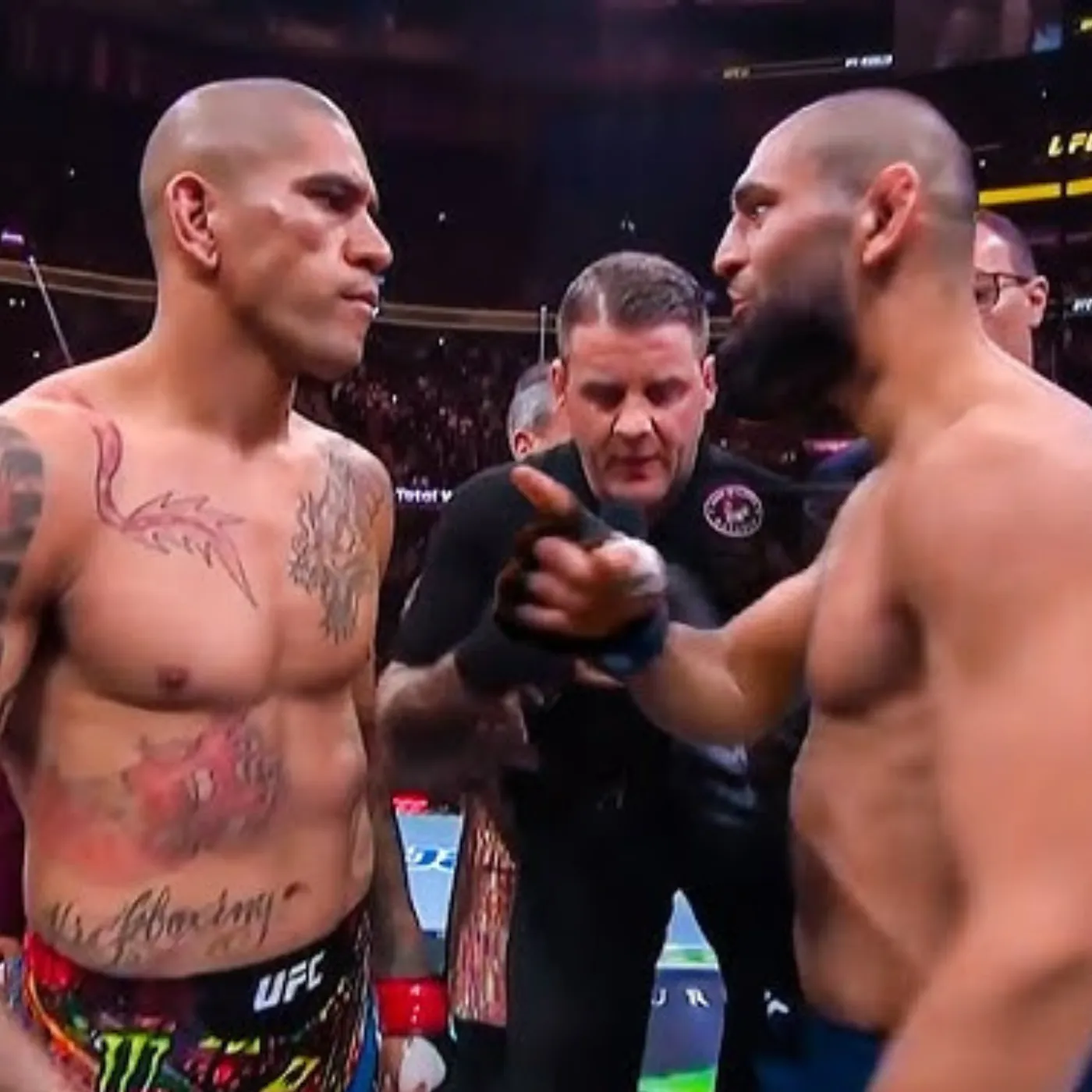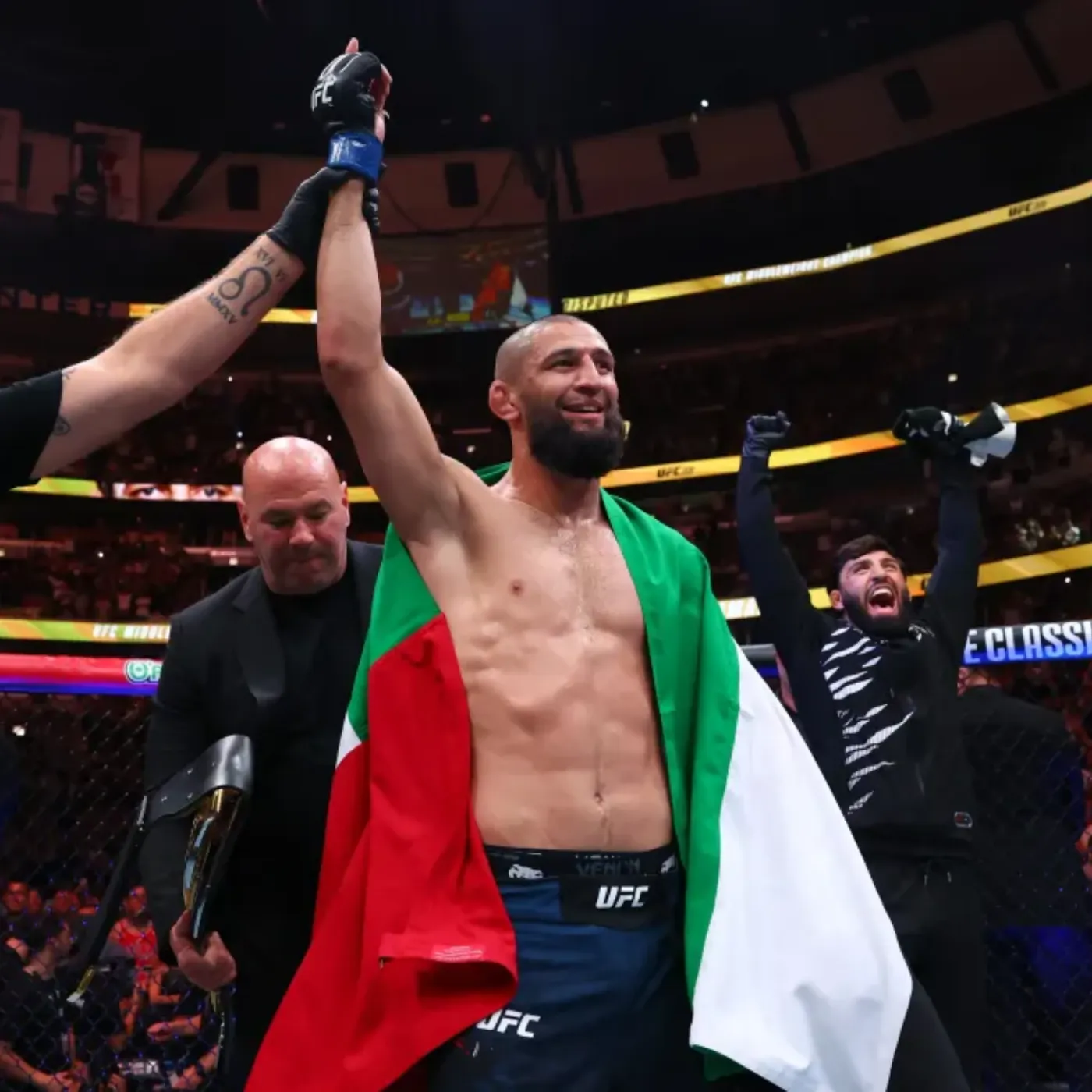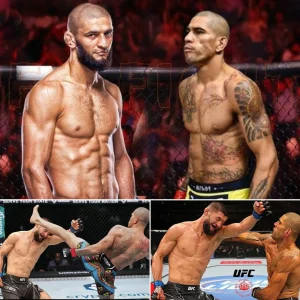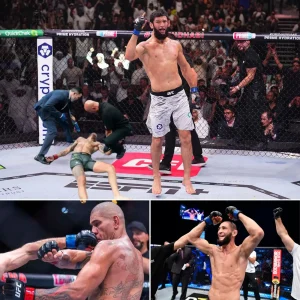The world of mixed martial arts is rarely short on bravado, but when Khamzat Chimaev steps up to speak, the air instantly tightens. His recent proclamation — “I’ll smash him like a child!” — sent shockwaves through fight fans and pundits alike, especially given who he named next: Alex Pereira, the fearsome striker turned UFC star. This is not just trash talk for clicks. It’s a statement layered with strategy, psychology, and the unmistakable hunger of a fighter who believes he can redefine the narrative of a matchup before the first bell rings.
The psychology behind the bombshell
When a fighter opens with such a blunt, incendiary line, they’re doing more than trying to rile an opponent. Khamzat Chimaev is playing a long psychological game. By asserting dominance in language, he attempts to plant doubt in Alex Pereira’s mind and frame the narrative in public perception: that he is the predator and Pereira is the vulnerable target. This kind of mental warfare can shape training camps, affect betting lines, and even influence how media frames the fight. But beyond the theatrics, Chimaev’s confidence is rooted in his track record — a series of dominant performances that showcase his ability to control distance, pace, and where a fight takes place.

Styles make fights: wrestling versus striking
At first glance, Alex Pereira and Khamzat Chimaev could not be more different in approach. Pereira brings a knockout pedigree and pinpoint striking that has finished fights with a frightening efficiency. His left hook and heavy conversions from combinations have changed careers. Chimaev, by contrast, thrives in the clinch and on the mat, suffocating opponents with relentless pressure and elite grappling. This stylistic clash is what creates such a compelling narrative: will Pereira keep the fight upright and land crippling strikes, or will Chimaev dismantle him piece by piece, grinding until the body and mind yield?
Chimaev’s comment — “I’ll smash him like a child” — signals a desire to avoid the stand-up chess that plays to Pereira’s strengths. It’s a vow to impose a physical, dominant blueprint where striking exchanges are minimized and control becomes the currency of the contest. For fans and analysts alike, the intrigue lies in whether Chimaev can execute that game plan against a man who has knocked out elite competition with clinical precision.
Training camp adjustments and tactical implications
A statement this bold forces adjustments on both sides. For Khamzat Chimaev, the challenge is to refine his takedown entries, scrambles, and transition speed without telegraphing his intent. He must maintain cardio across relentless pressure moments while sharpening ground-and-pound sequences that can end rounds decisively. For Alex Pereira, the plan will center on takedown defense, lateral movement, and counter-striking that punishes overzealous clinch attempts. Pereira must be able to create angles and use footwork to keep the fight in his realm where his punching power is decisive.
Coaches and cornermen become vital chess players here. Chimaev’s camp will likely drill low-shot entries, chain wrestling, and top control scenarios that frustrate a heavy hitter. Pereira’s team will drill sprawls, hip movement, and explosive counters to ensure that when Chimaev does close the distance, it costs him in energy and opportunities.
Public reaction and the role of hype
When a fighter utters a line as provocative as “I’ll smash him like a child,” social media amplifies every syllable. Fans pick sides, memes proliferate, and pundits dissect confidence versus disrespect. Hype can be a double-edged sword; it garners attention and builds a narrative but also raises expectations. If Chimaev fails to deliver a performance that matches his words, critics will pounce. Conversely, if he backs up the bravado inside the Octagon, his star power will magnify exponentially.
The fight’s promotional value is undeniable. Even casual viewers who might not follow every ranking shift tune in when personalities clash this intensely. The rhetoric fuels ticket sales, pay-per-view buys, and global engagement. Both camps understand the economics of drama, but real fighters understand the delicate balance between talk and performance. Ultimately, the cage will be the arbiter.
Historical comparisons and what this fight could mean
MMA history is full of matchups where styles produced unforgettable moments: wrestlers who neutralized strikers, strikers who demolished grapplers before they could secure takedowns, and tactical masterpieces where fighters executed game plans to perfection. A win for Khamzat Chimaev over Alex Pereira would solidify his status as a top-tier force capable of neutralizing elite strikers and adapting his craft. It would reshape how future opponents approach him and possibly open doors to title contention and mega-fights.
For Pereira, a victory would reinforce the argument that elite striking and fight IQ can outlast even the most oppressive pressure. It would elevate his standing among the sport’s greats who transitioned striking dominance into cohesive MMA success. The stakes are enormous, and both men understand that legacy is often written in single, defining performances.
The human element: motivation and backstory
Beyond the bravado and strategy lies the human story. Khamzat Chimaev has been on a meteoric rise, driven by an evident desire to prove himself and claim his place among the elite. His unfiltered statements reflect an athlete cut from a raw, uncompromising cloth. Motivation can be a powerful fuel in the cage, propelling fighters to push through pain and fatigue. Chimaev’s personal drive is an important variable — and his words are a window into the intensity he brings to each training day.
Meanwhile, Alex Pereira comes with his own narrative: a career transformed by brutal striking and an adaptability that has surprised many critics. Pereira’s calm demeanor in press conferences has often masked the ferocity he unleashes in the cage. The clash, then, is as much a mental duel as a physical one; both men must manage emotions and external noise to perform at their peak.
Fan predictions and expert analysis
Fans will argue endlessly about who has the edge. Analysts will study fight tapes and break down percentages: takedown success rates, striking defense, and control time. But variables like fight night adjustments and the fighters’ mental states complicate predictions. If Chimaev controls the center and lands consistent takedowns, the scales tip in his favor. If Pereira maintains distance and finds one of his signature power shots, the result could be sudden and decisive. Expert analysis will likely emphasize the importance of game-planning and adaptability more than raw bravado.
There’s also an intangible: momentum. A fighter on a winning streak with increasing confidence often performs differently than what tape alone predicts. Chimaev’s recent performances suggest he carries such momentum, but Pereira’s knockout history proves he can end fights in a heartbeat. That uncertainty is what makes the matchup must-see.
What to watch for on fight night
When the night arrives, there will be clear markers to watch. How Chimaev initiates engagement in the early rounds will reveal his tactical intentions. Is he committing to heavy inside leg attacks, or is he probing with clinch control? Pereira’s reaction to early pressure — whether he circles away, counters explosively, or clinches himself — will determine how the fight unfolds. Round-by-round, control and damage accumulation will matter. Significant strikes landed, takedown conversions, and successful scrambles will all paint the fight’s story.
If the battle stays close into the later rounds, conditioning could determine the outcome. A fighter who paces intelligently while maintaining output will likely sway judges or find the opening for a finish. This is where training camp discipline and smart coaching become visible and decisive.
The aftermath: consequences for both fighters
Should Khamzat Chimaev deliver on his bold claim, his marketability and ranking would skyrocket. He would not only silence critics who question his ability against elite strikers but also carve a path toward title shots and crossover super-fights. A definitive victory over Alex Pereira would be a career-defining moment that reshapes matchmaking priorities across the division.
If Pereira prevails, the narrative flips. He would prove that his striking is not only elite but adaptable, capable of neutralizing grappling-heavy threats. A win would also add another layer to his reputation and make him an even more dangerous opponent for anyone in the division.

Final thoughts: talk is cheap, work speaks louder
Trash talk has always been part of the fight game, but at the end of the day, words mean little without action. Khamzat Chimaev has thrown down a gauntlet with a line that will be replayed in promos and social feeds for weeks. It’s a dramatic flourish that heightens anticipation and forces both camps to sharpen their focus. Whether his vow — “I’ll smash him like a child” — turns into reality depends on execution, heart, and the unforgiving nature of combat sports.
The collision between Khamzat Chimaev and Alex Pereira is not just another fight on a card. It is a stylistic and psychological battle between a suffocating force and a lethal striker. The bombshell line has set the stage, but when the lights come up and the cage door closes, the truth will be decided by skill, adaptation, and the brutal clarity that only fight night provides. Fans will watch, pundits will debate, and history will record only what happened inside the Octagon.






